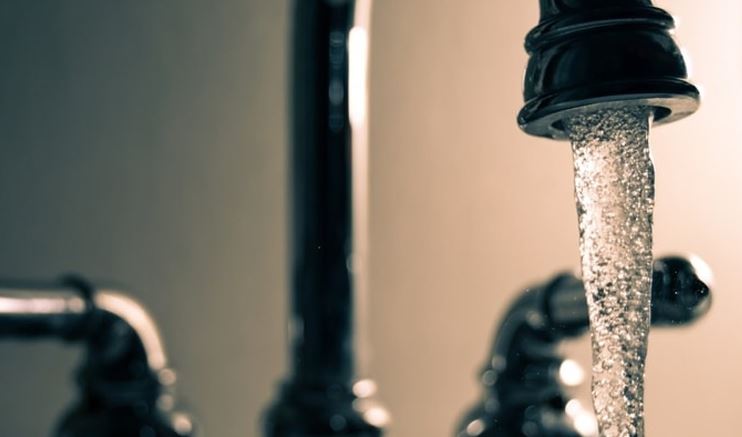// 'col-35 col-com-1 para-25-400'
If you have ever experienced the nuisance of having to wait for hot water, you're not alone. Many homeowners wonder why their water takes so long to heat up and what they can do to fix the problem. This guide will give you an overview of four causes of slow-heating water and what you can do to get hot water faster.
// 'col-65 col-com-1 def-img-1 img-shadow'

// 'col-50 col-com-1'
1. Too-Large Pipes
When you turn on hot water, the water that is at rest in the water supply lines must be used before heated water can reach the faucet. This is why the water from your faucet is always cold at first. The larger in diameter your water supply lines are, the more water they will hold, and therefore the longer it will take for the water you're running to get warm.
The material your water supply lines are made from also factors into how long you will have to wait for warm water. The denser and more thermally conductive a material is, the more heat it will draw out of the water in the pipe. Hiring a plumber to replace water supply lines with smaller and less conductive piping can allow the water at that faucet or fixture to heat up more quickly.
// ' col-50 col-com-1'
2. Poorly Insulated Pipes
The ambient temperature around your water supply lines will also affect how quickly the water in them loses heat. This effect is most pronounced during the winter months, where the temperature differential can be great enough for water to freeze inside your pipes. The better your water supply lines are insulated, the more quickly you will get hot water.
Installing foam pipe sleeves to insulate your water supply lines is an easy DIY project that any homeowner can complete. To apply pipe sleeves, pry open the sleeves, slide them over the pipe, seal them with the self-adhesive strip included in the sleeve kit, and cut the sleeve to the right length. Pipe sleeves are available in several different diameters to meet the needs of any home.
// 'col-50 col-com-1'
3. Low-Flow Fixtures
Low-flow plumbing fixtures are a great way to reduce your water bill by limiting the amount of water you use. However, if you aren't happy with how long it takes to get hot water, you should know that a low flow rate could be to blame. This is because low-flow fixtures will take longer to empty cooled water out of your supply lines.
Upgrading faucets, showerheads, and other fixtures to high flow-rate models in the areas where your water takes too long to heat up could be the best solution. This may be particularly effective for fixtures in parts of your home that are the furthest from your water heater.
Some fixtures have advanced features to increase flow-rate only when it's needed, such as shower heads with integrated valves that reduce flow-rate when the water gets hot.
// 'col-50 col-com-1'
4. Sediment Buildup
The mineral impurities that are present in your tap water can build up inside your water heater over time, creating a layer of sediment in the bottom of the tank. As the sediment layer gets thicker, it will slow heat transfer from the heating elements to the water in the tank.
Flushing your water heater tank can get rid of sediment that is slowing down your water heater. While you can flush the water heater yourself, most homeowners prefer to leave this specialized task to a technician who can carefully monitor the water flow to avoid any flooding.
There are several possible causes for water that is slow to heat, but with these tips you can take the first steps toward a solution. Contact us at Dignity Plumbing so our experienced technicians can help with all your plumbing service needs.
